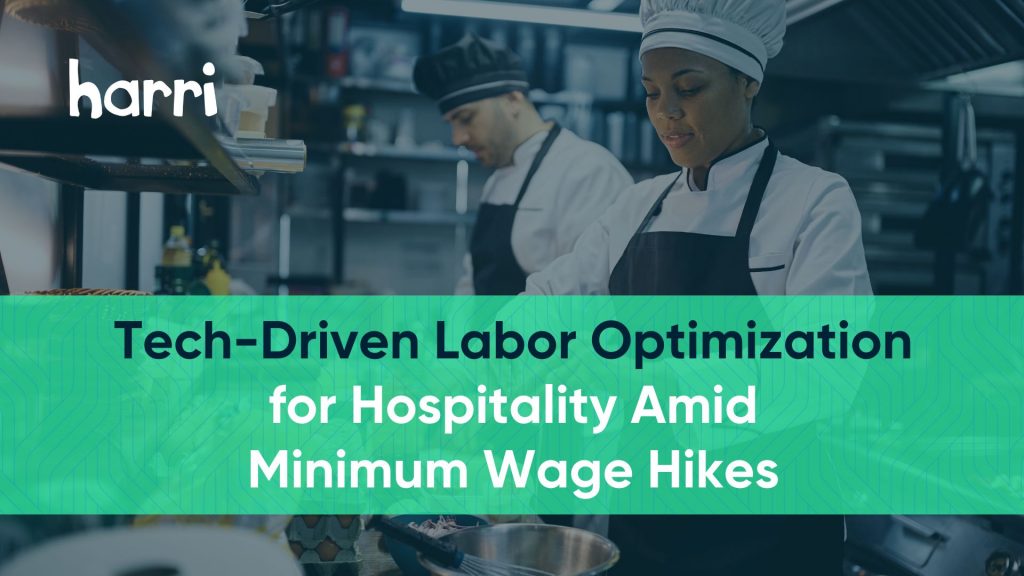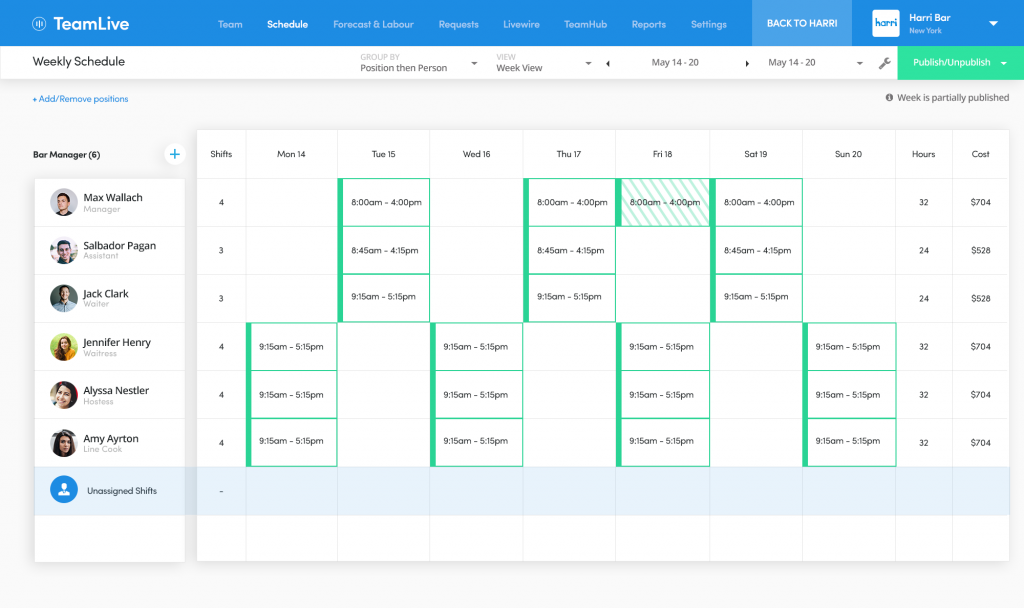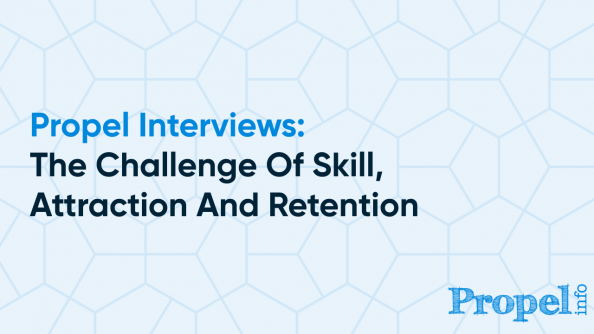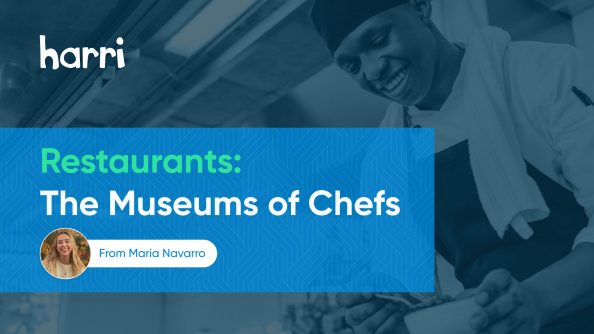Tech-Driven Labor Optimization for Hospitality Amid Minimum Wage Hikes

- By Harri Insider Team | March 21, 2024
From April 1, limited-service brands with at least 60 units nationwide will be required to meet the new $20 minimum wage for workers in California. While this legislation applies specifically to fast-food employees, it’s speculated that it may affect other industries, intensifying labor competition for full-service restaurants and beyond.
Operators have cited multiple strategies to offset the impact of these wage hikes, including menu price increases. For operators, the stakes are high, prompting a strategic reassessment of labor management to counterbalance rising costs without compromising on the twin pillars of service quality and profitability.
Labor optimization in the context of hospitality workforce management refers to the strategic alignment and efficient utilization of staff to meet the operational needs of a business, while ensuring high levels of service quality and customer satisfaction. It involves leveraging technology and data analytics to forecast demand, schedule employees effectively, manage labor costs, and enhance productivity, all without sacrificing the well-being of employees or the customer experience.
In the face of minimum wage increases, labor optimization becomes an invaluable tool for hospitality operators seeking ways to offset the impact of these wage hikes.
Strategic Labor Deployment: Where Precision Meets Demand
When the cost of everything is rising, ensuring that every employee is in the right place at the right time maximizes both financial resources and service outcomes. Precision in labor deployment can make a significant difference for hospitality brands. Labor optimization, when used to match employee skills and preferences with shifts, creates a synergy that elevates employee satisfaction and significantly enhances the quality of customer experiences. This approach acknowledges the individual strengths and preferences of each employee, aligning them with the operational needs of the business in a way that optimizes productivity, morale, and service quality.
By meticulously aligning staff allocation to specific time slots, revenue centers, and stations, operators ensure that every dollar spent on labor directly contributes to enhanced service quality and, consequently, profitability. This granular approach allows for dynamic adjustments—ramping up staff during peak hours and scaling back during slower periods, ensuring operational efficiency without sacrificing service standards.
Advanced Hospitality Scheduling Systems
Utilizing sophisticated scheduling software that incorporates AI and machine learning algorithms, operators can automate the process of aligning employee profiles with shift requirements. These systems can analyze variables such as expected foot traffic, special events, and even historical sales data to forecast demand and identify the optimal mix of skills and experience needed for each shift.
These practices also contribute to a better work-life balance, reduce burnout, and improve overall job satisfaction, ultimately contributing to an enhanced employee experience and better retention. Moreover, incorporating employee feedback into scheduling decisions further refines this alignment, ensuring the system remains responsive to both business needs and staff well-being.
Real-Time Labor Monitoring
With margins narrowing under higher wage standards, Harri’s real-time labor monitoring empowers operators to maintain profitability through vigilant control and optimization of labor expenses. Harri enables operators to track labor costs, productivity, and performance metrics. By having access to up-to-date labor data, managers can make informed decisions regarding labor deployment, identify areas of improvement, and adjust schedules accordingly. This real-time visibility helps businesses optimize labor utilization and control costs.

Machine Learning: The Catalyst for Continuous Labor Optimization
The integration of machine learning into labor optimization tools marks a pivotal advancement. By continuously analyzing operational data, these tools become smarter, offering more accurate staffing predictions and uncovering previously unseen patterns in demand.
Consider a scenario where a restaurant experiences unexpected spikes in demand every third Friday of the month, a pattern that eluded managers but is detected by machine learning algorithms. Armed with this insight, the restaurant can optimize its labor deployment to meet this surge, enhancing customer service and maximizing revenue without unnecessary labor costs.
Another application might involve analyzing server performance data to identify which staff members generate the highest sales per hour. Machine learning can then recommend scheduling these high performers during peak times, optimizing revenue generation.
Machine learning elevates labor optimization by harnessing predictive analytics to draw insights from sales trends, customer foot traffic, and even weather patterns, enabling proactive staffing adjustments that align perfectly with demand. Beyond forecasts, machine learning uncovers the nuanced patterns of customer and employee behavior, allowing for a finely tuned alignment of staff skills and numbers.
Its greatest strength lies in its adaptive learning capability; as it absorbs more data, it fine-tunes its predictions, ensuring that labor management strategies grow more accurate and effective over time. This approach transforms labor optimization into an intuitive, forward-thinking process that continuously enhances operational efficiency and service quality.
This means not only identifying areas of overstaffing but also predicting surges in customer traffic, enabling proactive staffing adjustments. The result? A perpetually refining system that consistently enhances operational efficiency and cost-effectiveness.

Beyond Cost Control: Enhancing Employee Engagement and Ensuring Compliance
One key aspect of controlling labor costs is enforcing schedule adherence to minimize unauthorized overtime and ensure that employees are working their scheduled hours. Still, effective labor optimization transcends cost management. Amidst an industry adjusting to higher wages, creating a work environment that values flexibility, engagement, and compliance is key to retaining talent.
Features like smart scheduling and shift swapping directly contribute to higher employee satisfaction and retention, reducing the expenses and disruptions associated with high turnover rates. Investing in an engaged, well-supported workforce not only boosts employee morale but also elevates customer experiences, fostering a cycle of satisfaction and loyalty.
Moreover, in an era of ever-evolving labor laws, ensuring compliance with minimum wage regulations and overtime standards is much easier to manage with the support of technology.
“So many regulations are difficult to comply with because we’re people. It’s important to get our teams engaged in it and really understand what we’re doing – and that’s scary for them. You can’t blame them,” shared Jessica Napier, VP of HR at Pacific Catch. “Some people pick it up and think, ‘Oh this is easy!’ Others will think ‘Oh my gosh, what am I supposed to do? How am I supposed to do this? Why am I doing it?’ We have to try to develop our teams in a way that they can handle tough situations.”
Taking some of the tasks away from employees helps them focus on what they were originally hired to do – provide a great customer experience, which relies on more customer interaction and less time on administrative tasks. Labor optimization tools automate these tasks, safeguarding operators against legal penalties while streamlining administrative processes.
“We’ve got to leverage technology to eliminate pain points and not to replace human connection.” – Jessica Day, Gregory’s Coffee
Relying on technology that takes into account regional and localized labor laws, ensures that operators comply with wage and hour regulations. By automating compliance with labor laws, operators have peace of mind, knowing that they are adhering to labor laws and protecting their employees’ rights.
The implementation of a $20 minimum wage for fast-food workers in California sets a precedent that may extend to other states and industries. As the effect of this legislation progresses, labor optimization is a vital strategy for hospitality operators. It not only mitigates the impact of rising labor costs but also enhances service quality, operational efficiency, and employee satisfaction—key ingredients for sustained profitability and growth.


















